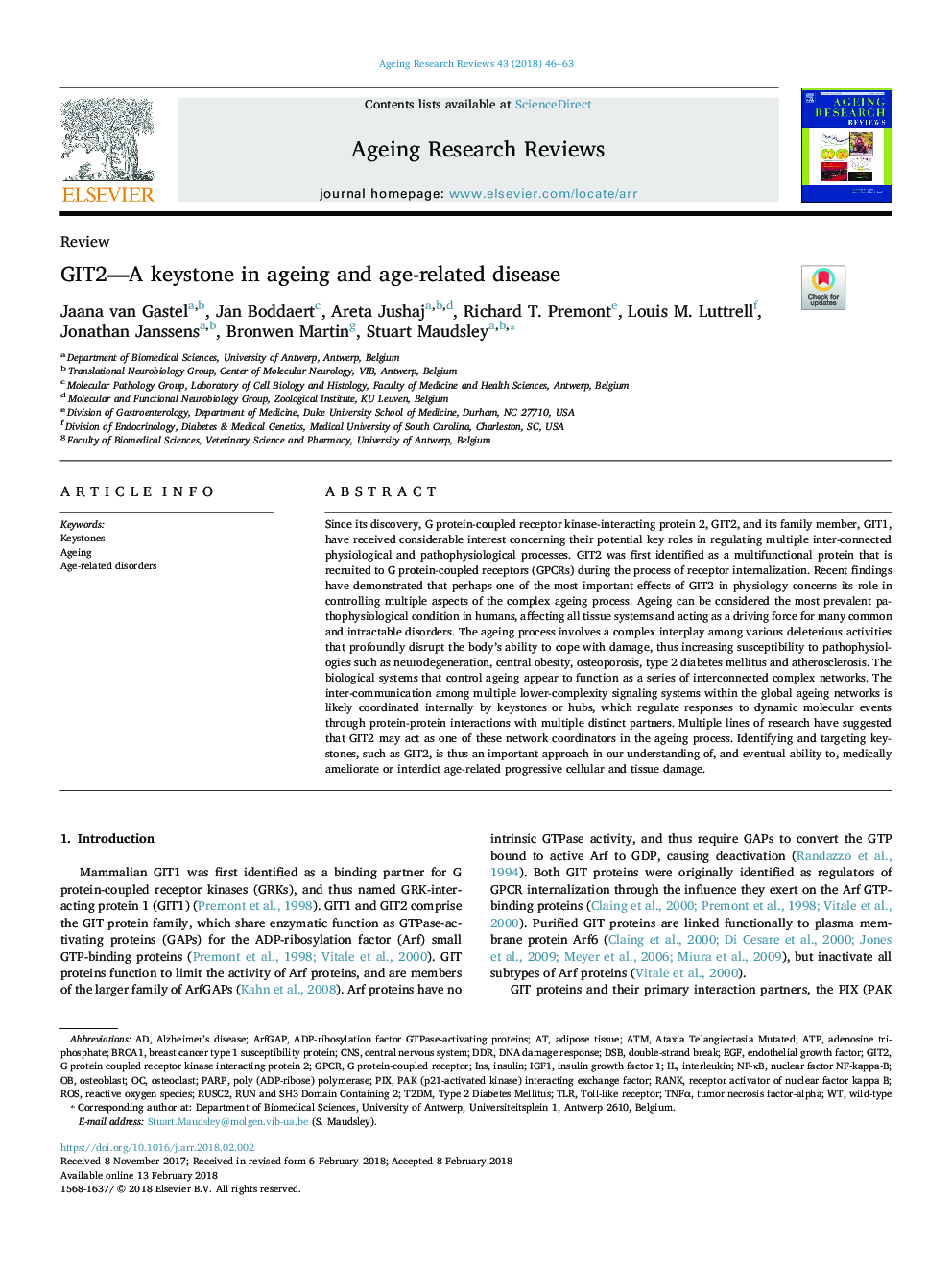| Article ID | Journal | Published Year | Pages | File Type |
|---|---|---|---|---|
| 8257178 | Ageing Research Reviews | 2018 | 18 Pages |
Abstract
Since its discovery, G protein-coupled receptor kinase-interacting protein 2, GIT2, and its family member, GIT1, have received considerable interest concerning their potential key roles in regulating multiple inter-connected physiological and pathophysiological processes. GIT2 was first identified as a multifunctional protein that is recruited to G protein-coupled receptors (GPCRs) during the process of receptor internalization. Recent findings have demonstrated that perhaps one of the most important effects of GIT2 in physiology concerns its role in controlling multiple aspects of the complex ageing process. Ageing can be considered the most prevalent pathophysiological condition in humans, affecting all tissue systems and acting as a driving force for many common and intractable disorders. The ageing process involves a complex interplay among various deleterious activities that profoundly disrupt the body's ability to cope with damage, thus increasing susceptibility to pathophysiologies such as neurodegeneration, central obesity, osteoporosis, type 2 diabetes mellitus and atherosclerosis. The biological systems that control ageing appear to function as a series of interconnected complex networks. The inter-communication among multiple lower-complexity signaling systems within the global ageing networks is likely coordinated internally by keystones or hubs, which regulate responses to dynamic molecular events through protein-protein interactions with multiple distinct partners. Multiple lines of research have suggested that GIT2 may act as one of these network coordinators in the ageing process. Identifying and targeting keystones, such as GIT2, is thus an important approach in our understanding of, and eventual ability to, medically ameliorate or interdict age-related progressive cellular and tissue damage.
Keywords
Age-related disordersGPCRTLRPARPDDRT2DMPIXINSGIT2TNFαReceptor activator of nuclear factor kappa BEGFDSBNF-κBArfGAPataxia telangiectasia mutatedIgf1ROSAdenosine tri-phosphateATPOsteoblastOsteoclastinsulininterleukinAdipose tissueAlzheimer’s diseasetumor necrosis factor-alphaToll-like receptorATMCNSType 2 diabetes mellitusRankAgeingbreast cancer type 1 susceptibility proteincentral nervous systemdouble-strand breakInsulin growth factor 1Endothelial growth factorwild-typeDNA damage responsepoly (ADP-ribose) polymeraseBRCA1Reactive oxygen speciesG protein-coupled receptor
Related Topics
Life Sciences
Biochemistry, Genetics and Molecular Biology
Ageing
Authors
Jaana van Gastel, Jan Boddaert, Areta Jushaj, Richard T. Premont, Louis M. Luttrell, Jonathan Janssens, Bronwen Martin, Stuart Maudsley,
